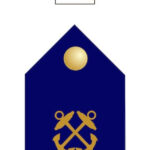Choir Uniforms play a significant role in the visual and liturgical identity of church choirs. For those seeking to understand the historical and traditional basis of such attire, particularly within the Roman Rite tradition, the combination of the cassock and surplice stands out as a time-honored standard. This dress code, rich in history and symbolism, offers a glimpse into the enduring practices of liturgical worship.
As detailed in Adrian Fortescue’s seminal work, Ceremonies of the Roman Rite Described, the cassock and surplice have long been recognized as the common vestments for servers and all those assisting in choir functions. Fortescue, writing in the early 20th century and referencing established practices, clearly states, “The common dress for servers and all who assist at any function in choir is a black CASSOCK (talare) with a white linen SURPLICE (superpelliceum).” This foundational text underscores the deep roots of this uniform within Catholic tradition.
The concept of “choir” itself, as Fortescue elucidates, extends beyond just the singers. Historically, the liturgical choir encompasses those who assist in the service, whether through song or other roles. While ideally, singers would be positioned near the altar, practical considerations often led to their placement elsewhere in the church. Regardless of physical location, the liturgical choir, broadly defined, maintains its role in enhancing the solemnity and beauty of worship.
The cassock and surplice, therefore, represent more than mere garments; they embody a tradition that predates the Reformation, firmly placing them within the ancient practices of the Catholic Church. This uniform is not a product of Protestant reforms but rather a continuation of a heritage deeply embedded in the Roman Rite. Churches around the world continue to embrace this tradition, sometimes with variations in cassock color to reflect liturgical seasons, while consistently retaining the white surplice. The enduring use of the cassock and surplice affirms their significance as authentic and historically grounded choir uniforms.

